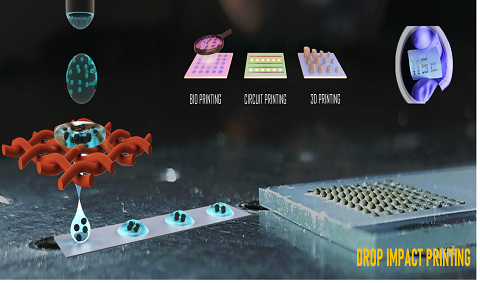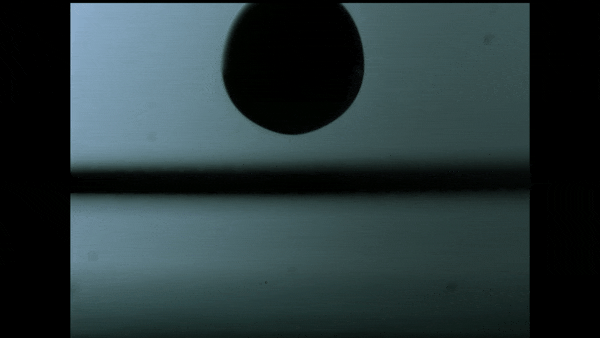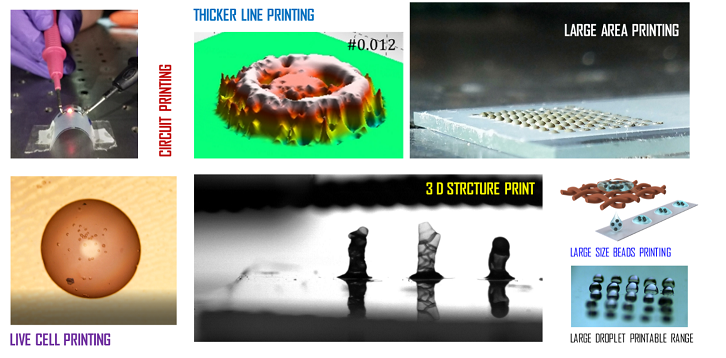
Pursuit to accurately print microscale droplets is not new. However, with the advent of additive manufacturing and 3D bio-printing, research interest in this technology has been renewed. Newer applications demand use of inks which are not well suited for conventional printers. For example, bio-printing requires dispensing live cells. Viability of cells is dramatically reduced by the thermal or piezoelectric actuation used in conventional printers. Further, printing inks with higher mass loading (i.e. larger quantity of particles or cells per droplet) is desirable and often necessary. This remains a challenge which has not been addressed till date. Printers employ a nozzle with small orifice to form the droplets. Particles in inks with high mass loading have a tendency to aggregate at the orifice causing the nozzle to clog.
The technique in this study addresses these problems by replacing the nozzle with a mesh. Nanowires are grown on the mesh and the nanostructured surface of the mesh is chemically treated to render it superhydrophobic. When a large droplet (2-3 mm in diameter) driven by gravity, impacts the super hydrophobic mesh, it is repelled by the non-wetting surface and the droplet bounces back. However, during this droplet rebound an interesting phenomenon takes place. As the droplet spreads upon impact, a cavity is formed at the centre of the impacting droplet. During the recoil phase of the impact this cavity collapses, leading to a singularity. The kinetic energy of the recoiling interface gets focused and this leads to ejection of a single satellite-free microscale droplet. The size of the generated droplets depends on the pore opening of the mesh. The generation of droplets ranging from 40 microns to 960 microns in diameter has been demonstrated here. Capability to disperse such a large range of droplet sizes is unique to this technique.

Video showing mechanism of satellite free drop ejection through sieve
Since the ink droplet has a short contact (10 ms) with the mesh (nozzle), the nanoparticles in the ink do not get a chance to aggregate and clog the pore opening. This allows one
- to print ink with record high mass loading (71%),
- to print lines of high thickness (as high as 217 microns) using a single print.
To achieve this thickness conventional techniques will require hundreds of print cycles. Replacing the nozzle with the mesh also allows for the printing of relatively large particles without clogging the device.

Video showing printing of high mass loading (71%) nanoparticle suspension.
Use of this printing technique has been demonstrated for various applications. Electronic circuits and devices have been printed on flexible substrates. 3D printing has been demonstrated using high mass loading ink. Printing of live cells and bacteria has also been achieved using this technique.
Finally, the setup is extremely simple, reducing the setup cost which improves its accessibility to a larger community. Further, the mesh costs only a small fraction of the nozzles that it replaces. This significantly reduces operational costs when compared to conventional printing techniques.

Image Credit: Nature communications, Microfluidic Devices & Heterogeneous Systems Lab, CeNSE, IISc Bangalore.
Video: https://www.youtube.com/watch?v=TCmkuCFR4Go
The paper “Modak, C.D., Kumar, A., Tripathy, A. et al. Drop impact printing. Nature Communications 11, 4327 (2020) can be accessed here: https://doi.org/10.1038/s41467-020-18103-6.
